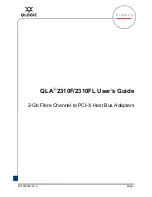
53
Intermec EasyCoder 501 – Service Manual Ed. 7
Chapter 8 Print Unit
8.7 Printhead
The printing is produced by the thermal printhead, which consists
of a line of very small, closely spaced resistors on a ceramic tile
fi tted across the media. When a current is led through the resistors,
commonly called “dots,” these will be heated very quickly. When
the current is shut off, the dots cool down just as fast.
As the media is fed past the dots, the hot dots will produce a
number of black spots on direct thermal edia, or on other face
materials via a thermal transfer ribbon. The spots can be combined
into patterns, which make up letters, bar codes, or images.
The direct thermal printing method requires a special media coated
with a thin layer of heat-sensitive chemicals. As the media is fed
past the dots, the heat from the dots will make the chemicals react,
producing a dark salt, which makes up the imprint under each dot.
In the thermal transfer printing method, a special “ink”-coated
transfer ribbon is used. When the ribbon is heated by a dot on the
printhead, the “ink” melts and sticks to the receiving face material,
where the ink immediately becomes solid again, producing a black
spot. The transfer ribbon does not smear, neither before nor after
printing. Nor do the printed labels smear, even if the printout may
be smudged by extensive rubbing if an unfortunate combination
of ribbon and face material is used. The thermal transfer method
makes it possible to use a much wider range of face materials for
printing, for example papers, boards, plastics, foils, etc. However,
an original transfer ribbon from Intermec must always be used.
Information on how to switch between direct thermal and thermal
transfer printing is provided in the Installation & Operation
manual.
The basis for all measures and positioning in the Intermec Fin-
gerprint programming language is the size of printhead dots. For
example, in an 8 dots/mm printhead, each dot has a nominal size of
0.125 mm (4.9 mils). This means that a heated dot under standard-
ized conditions will produce a black spot which has a diameter of
0.125 mm. Depending on dot temperature, exposure time, media
and ribbon characteristics, etc., the spot may actually be somewhat
smaller (weak print) or larger (black print), but that does not affect
the calculation of distances, sizes, and positions.
















































